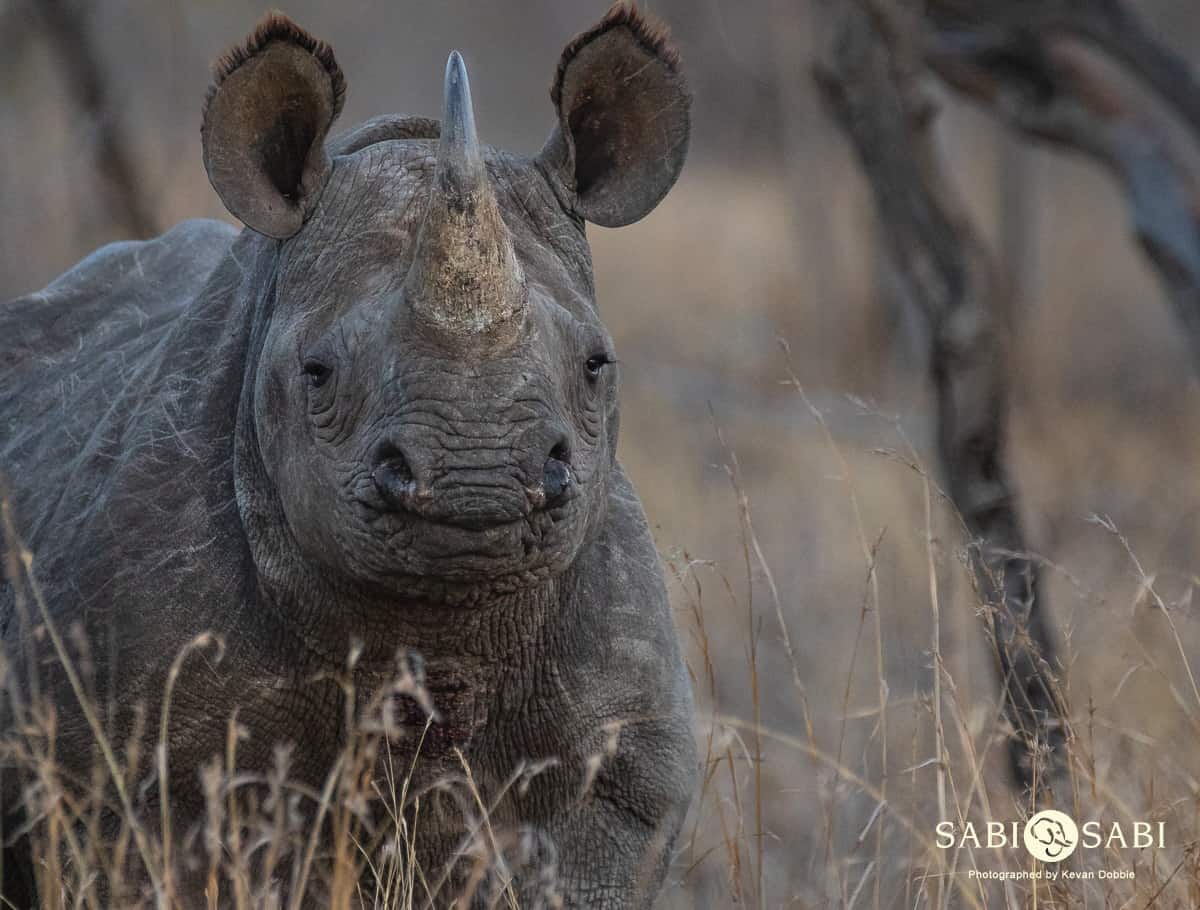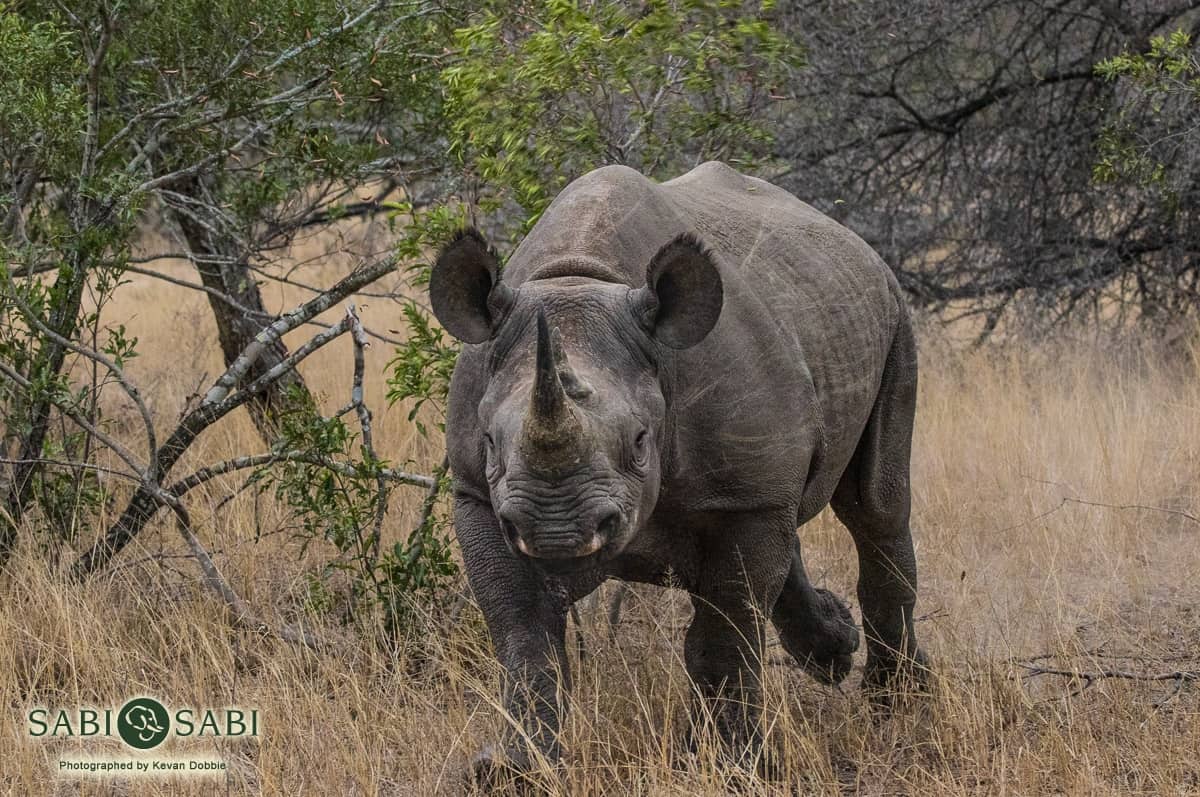Black Rhino
on Nov 30, 2018Species name: Black Rhinoceros
Scientific Name: Diceros bicornis
Weight: Male: ±1400kg - Female: ±850kg
Shoulder Height: Male: ±160cm - Female: ±160cm
General Habitat: Woodland/Savanna and Thickets
Diet: Herbivorous – Predominantly a Browser

Sabi Sabi Private Game Reserve is home to many endemic species as it shares unfenced boundaries with the Kruger National Park. In today’s blog we will be exploring the Black Rhinoceros. We are extremely lucky to have the ability to view both species of Rhinoceros, the White Rhinoceros and the Black Rhinoceros, however the Black Rhinoceros is scarce. The current population is now numbering between 5 042 – 5 455 in the wild and they are considered critically endangered on the IUCN Red List.
Having the ability to view such special scarce animals isn’t easy as Black Rhino are found within areas of very dense vegetation (thickets) as they are predominantly browser meaning they feed from trees. They require thickets of small shrub-like vegetation that measure between one to two meters in height. With a prehensile upper lip that is hooked, Black Rhino have this adaptation for grasping and holding leaves and branches while feeding. Other general characteristics is the shorter less elongated head, lack of the dorsal muscle on the shoulder blades as the head will be raised above the shoulders for browsing.
Black Rhino have an interesting social structure, like White Rhino, bulls develop territories and are generally solitary, however the cows and sub-adults can be social as females have overlapping ranges. A Black Rhino cow can give birth to one calf every 2,5 to 3 years with a gestation period of 15 to 16 months. At birth the calf will weigh between 35 – 50kg (80 – 110Ib) and should be fully weaned by 2 years of age. At about the age of 4,5 to 5 years, a female would have reached sexual maturity, however, will only produce their first calf at around 6,5 to 7 years of age. She may form a small grouping alongside her mother until she has her first calf. A male will only be able to reproduce at around 10 – 12 years as they are then able to claim and defend a territory which will encompass females.
My Memorable Sighting
Each sighting of a Black Rhinoceros is a memorable one due to their rarity as a species. I can recall each sighting of Black Rhino on the reserve and look back at the photographs or videos I have taken and just sit and think how lucky we are to have this ability to witness these species in a wild area within their natural habitat. I do have one sighting that I recall and that I would say is my most memorable.
My tracker and I were following lion tracks through some thick vegetation and we then entered a small open area. That open are was quite over-grown with a small shrub known as Round-leaf Teak. Suddenly my tracker stops and we go onto our haunches. We had just walked into not one, but five Black Rhino. Black Rhino are relatively skittish animals and react in either one of two ways, either retreat or to charge, simply put. Luckily, we had a group with two calves and all five decided to retreat and flee into a Tamboti thicket. A nerve-racking experience but one I will remember forever. Later on, we relocated with a vehicle and enjoy a fantastic sighting of one of the most critically endangered species in the Greater Kruger area.
Photo & Video Content












